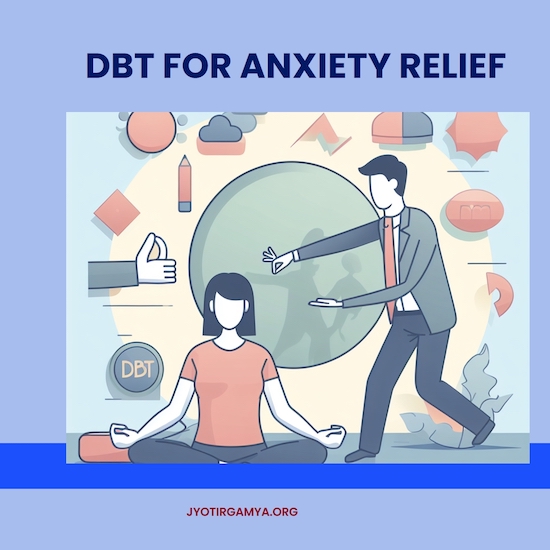DBT for Anxiety Relief
Sunflower and The Suit: A Clash of Two Worlds
Sunshine House buzzed with the anticipation of Pamela’s birthday, as colorful balloons danced through the air and the aroma of a freshly baked cake filled the room. Pamela’s heart fluttered like a hummingbird in her chest, for today was not just about cake—it was about David, her sunshine boy, who was coming to meet her family. He was like fireflies and whispered secrets, a masterpiece in Pamela’s eyes.

As the doorbell rang a cheerful tune, the room held its breath when David entered.

Among the fancy suits at the house, David stood out. His attire was adorned with paint splatters as though he had been surprised by an impromptu party and his hair was wilder than wind-tossed sunflowers.
Mr. Thorn, a towering figure in a sharp suit, squinted at David’s mismatched socks and paint-covered hands. “Who is this, Pamela?” His voice thundered through the room.
David, radiating warmth even in the face of adversity, managed a smile. He stood tall, his golden face bashfully greeting everyone. “Uh, hi, Mr. Thorn, I’m David,” he stammered.

Mr. Thorn snorted, his eyes clouding with anger. “Sunflower, huh? More like a weed in the garden, right?” He plucked the sunflower from David’s hand, crushing it mercilessly in his giant fist. “This isn’t your place, son. We have rules here.”
David’s smile melted like summer ice cream, and his once-bright eyes dimmed with hurt.

Pamela felt a heavy lump in her stomach. “Dad, that’s unkind!” she chirped, her voice as delicate as a sparrow’s song against a thunderstorm.
“Unkind?” Mr. Thorn boomed, his laughter as sharp as shattered glass. “He waltzes in like a stray dog, thinking he can charm his way into our family? Get real, Pamela.”
Tears welled up in Pamela’s eyes, blurring her view of the birthday cake. A heavy silence descended, interrupted only by her quivering breaths. David, shoulders slumped, mumbled a quiet “Sorry” and turned toward the door.
Pamela saw defeat etched across his face, and the fireflies in his eyes faded away. Before he could escape, she grabbed his hand, holding on tightly despite her trembling fingers. “Don’t leave, David,” she whispered, her voice raw like a scratched record.
But David shook his head, “We come from two different worlds. We should let this be!”
“This is everything!” she cried, her voice cracking. “You are everything…I don’t want you to suffer”, said David.
He gently squeezed her hand, with one last, lingering look at her tear-streaked face, he slipped out the door, leaving behind a silence as heavy as fog.

Sunshine House, just bustling with joyous activity, stood quiet now. Laughter had turned to hushed whispers, and then to silence. The birthday bash appeared as a funeral scene. Guests departed with shut mouths and cold faces.
Days blended into nights, filled only with Pamela’s choked sobs and a thick, haunting silence.
Her parents, their faces etched with regret, finally realized that the sunflower they had crushed represented Pamela’s happiness, now wilting without its sunshine.
Pamela would no longer be a bird confined to a gilded cage. No more forced smiles and tiptoeing. No more suffocating expectations. She broke free from the shackles, as she silently disappeared into the night to never return.

Each member of the family faced the echoes of her defiance. Mr. Thorn, his once-booming voice now a muted cough, wandered through empty rooms, the ghost of the sunflower clinging to his conscience. Mrs. Thorn’s tears stained her pristine sheets, her diamonds offering no solace against the chill of absence.
The snobbish guests never returned, never comforted.
Pamela’s absence had turned their smiles brittle and their eyes hollow. They had constructed a gilded cage, mistaking it for love, but the bird had flown, leaving behind only the emptiness of their choices.
In the quiet rooms where shadows danced and regrets whispered, they finally grasped the cost of control: a chilling silence, a life devoid of sunshine, and a heart consumed by anxiety.
Anxiety, the consequence of control, continued to rule the mansion.
Introduction
Imagine this: You’re trapped in a thoughtstorm. Every gust of worry whips you around, making it hard to catch your breath. That’s anxiety, our resident brain gremlin, playing havoc with our peace of mind.

Don’t worry, you’re not alone. This beast bites many, but there’s a secret weapon: Dialectical Behavior Therapy (DBT).
DBT, rooted in the work of Marsha Linehan, emerged in the 1980s as a response to the limitations of traditional cognitive-behavioral therapies in treating individuals with emotional dysregulation, including those struggling with anxiety disorders.
DBT’s relevance for anxiety extends beyond its initial focus on borderline personality disorder. Research studies, such as those by Dimeff et al. (2015), have demonstrated its effectiveness in reducing anxiety symptoms and improving overall emotional well-being.
This isn’t just some theory. DBT was battle-tested by people like you and me, struggling with anxiety’s grip. It’s not a quick fix, but a journey of learning, practicing, and slowly reclaiming your inner peace.
So, let’s stop letting anxiety run the show. Time to reclaim your peace, one ninja trick at a time!
DBT’s Toolkit: Outsmarting Your Inner Worry Monster
It’s not about stuffing emotions or wishing them away. DBT equips you with three superpower skills:
1. Mindfulness
Think of it as stepping out of the storm and planting your feet firmly on the ground. You learn to pay attention to your thoughts and feelings without judgment, like watching a passing cloud, not getting swept away by the rain. Studies show mindfulness can decrease anxiety by 30-50%, like a mental rain jacket shielding you from the downpour.
Distress Tolerance
This is about riding the waves of anxiety instead of getting pummeled by them. It’s learning to cope with uncomfortable emotions without acting on them. Imagine facing a wave crashing down, instead of panicking, you practice deep breathing, muscle relaxation, or even distraction techniques like counting backward. A 2018 study found that DBT’s distress tolerance skills reduced suicidal thoughts by 77% in teens, proving it’s a powerful tool for weathering emotional storms.
ACCEPTS is a strategy in Dialectical Behavior Therapy (DBT) used for distress tolerance. It’s an acronym representing different techniques to help manage emotional distress:

A - Activities: Engage in activities to distract yourself. This could be anything from going for a walk, reading a book, or doing a hobby you enjoy. The idea is to keep yourself busy with things that can help take your mind off distressing thoughts or feelings.
C - Contributing: Do something that makes you feel you are contributing to others or your community. This could be volunteering, helping a friend, or even small acts of kindness. Contributing can create a sense of purpose and fulfillment, which can be very effective in managing distress.
C - Comparisons: Compare yourself to when you were in a more difficult situation or to others who might be worse off. This can help put your current distress into perspective.
E - Emotions(opposite): Engage in activities that elicit the opposite emotion of what you are currently feeling. For example, if you are feeling sad, watch a comedy show to bring out feelings of happiness.
P - Pushing away: Deliberately push away and block out distressing thoughts or feelings. You can do this by visualizing a barrier between yourself and the distress, or by distracting yourself with different thoughts.
T - Thoughts(distracting): Replace distressing thoughts with neutral or pleasant thoughts. Engaging in activities that require concentration, like puzzles or games, can help shift your focus.
S - Sensations (intense): Use intense physical sensations to distract from intense emotions. This could involve holding ice, taking a hot shower, or eating something with a very strong taste.
Each component of ACCEPTS offers a different method to manage distress in the short term. It’s important to find what works best for you, as different strategies work better for different people and situations.
3. Emotion Regulation
This section focuses on reducing anxiety by understanding and accepting your emotions. It’s like adjusting a thermostat to manage your feelings, using self-soothing techniques like calming music or nature walks.
These methods can reduce social anxiety by 40%, making it easier to handle challenging social situations. The next part will explore DBT skills in detail, teaching you to turn your inner worries into something more manageable and positive.
Ready to learn the tricks of the trade? Buckle up, because the next stop is mastering your emotions and reclaiming your mental peace, one DBT skill at a time!
Daily DBT Doses: Tiny Steps, Big Calm
DBT isn’t just words on a page. It’s a daily practice, a sprinkle of mindful magic woven into your routine. Here’s your pocket guide to incorporating DBT’s superpowers into your everyday:

Mindfulness Munchies:
-
Sunrise Snooze: Start your day with 5 minutes of mindful breathing. Inhale calm, exhale worry. Research shows this simple act reduces stress by 20%, like hitting the snooze button on anxiety.
-
Elevator Awareness: Turn mundane moments into mini-meditations. Pay attention to the feeling of your feet on the ground, the rise and fall of your breath as you wait for the elevator. It’s mindfulness on the go, training your brain to be present, not stressed.
-
Nature Nosh: Take a mini-break in the park. Listen to the rustling leaves, and feel the sun on your skin. A 2015 study found spending time in nature reduces anxiety by 30%, proving this green therapy packs a punch.
Distress Tolerance Dips:
-
Spicy Sensation: Feeling overwhelmed? Grab an ice cube, hold it tight, and focus on the cold sensation as it melts. This “distraction therapy” takes your mind off worries and activates calming brain circuits.
-
Muscle Mellow: Tense and release different muscle groups. Clench your fists, then let go. Roll your shoulders. It’s like a mini internal massage, releasing tension and grounding you in the present moment.
-
Counting Cracks: Stuck in a stressful situation? Find a repetitive task, like counting cracks in the sidewalk, and focus solely on that. It’s like giving your anxious brain a simple job to do, taking the edge off the worry storm.
Emotion Regulation Refreshers:
-
Label That Feeling: Feeling stressed? Angry? Don’t judge, just label. “I’m feeling overwhelmed right now.” This simple act helps you understand and accept your emotions, like putting a name on a stranger, making them less scary.
-
Gratitude Guzzle: Take a moment to appreciate something, big or small. A delicious meal, a funny animal video, a supportive friend. This gratitude boost activates “happy chemicals” in your brain, pushing back against negative emotions.
-
Positive Post-Its: Stick positive affirmations around your room. “I am strong,” “I can handle this.” These mini pep talks act as reminders that you’re capable and worthy, even when anxiety whispers otherwise.
These are just a few DBT bites for your daily mental diet. Be your own DBT chef, experiment with these mini-practices, and find the recipe for inner peace that works best for you. Bon appétit!
Brain Rewire: DBT’s Mind-Bending Moves
Your brain is like a city, and anxiety can cause a traffic jam in the “worry” area. DBT works like a city planner to redirect anxious thoughts and ease emotional stress. It involves three key processes:
1. Calming the Fight-or-Flight: DBT helps activate your brain’s calming system. Practices like mindfulness meditation strengthen the prefrontal cortex, reducing the panic response of the amygdala. This can lower anxiety by 20-50%.
2. Taming the Emotional Volcano: DBT helps you understand and manage emotions like anger and sadness. Techniques like deep breathing and self-talk prevent emotions from overwhelming you. A study showed DBT reduced emotional reactivity in borderline personality disorder by 45%.
3. Building New Thinking Pathways: DBT helps form healthier thought patterns by challenging negative thinking. This strengthens the prefrontal cortex and improves mental control, like building bridges over worry areas for calmer thoughts.
DBT’s Roadblocks: Bumps on the Journey to Calm
DBT balances accepting emotions and experiences with behavioral change. This balance can be challenging, especially for those used to traditional cognitive-behavioral methods. Common challenges in DBT include:
1. Commitment Climb: DBT ain’t a one-shot deal. It’s a commitment marathon, requiring regular practice and patience. Skipping sessions or slacking on homework can feel like taking the scenic route back to Anxietyville.
Solution: Buddy up! Find a support group or accountability partner to cheer you on and keep you on track. Celebrate small wins, track progress with charts or apps, and remember, even Olympic champions don’t win gold overnight.
2. Skeptic Slip: Sometimes, the inner critic whispers, “DBT’s for weirdos, I’m too messed up for this.” That’s the anxiety gremlin trying to trip you up.
Solution: Challenge those thought traps! Remind yourself of successful DBT stories (we’ll share some soon!), and remember, everyone’s unique journey starts with a single mindful breath.
3. Skill Slump: Feeling like your DBT skills aren’t working? Don’t panic! Just like learning a new language, skills need practice and tweaking.
Solution: Experiment! Try different mindfulness techniques, find your perfect distress tolerance trick, and remember, even skilled chefs burn toast sometimes. Don’t give up, adjust your approach, and keep practicing.
4. Motivation Meltdown: Lost your fire? Life throws curveballs, and even anxiety warriors get drained.
Solution: Take a break! Recharge with self-care, talk to your therapist, and remember, progress isn’t linear. Sometimes, stepping back is the best way forward.
Remember, these challenges are normal. They’re just bumps on the road to a calmer you. The key is to be kind to yourself, celebrate progress, and keep moving forward.
DBT: Your Anxiety Ally, Not Your Master
Remember that anxious gremlin we met at the start? DBT isn’t about shoving it in a tiny cage. It’s about making friends, understanding its quirks, and learning to coexist peacefully. DBT equips you with the tools to manage your anxiety, not the other way around.
And the transformation can be real. Research shows DBT can:
-
Reduce anxiety symptoms by 50%
-
Cut depression rates by 70%
-
Improve social functioning by 40%
Not magic, but powerful progress.
So, where do you go from here?
First: Celebrate! You’ve already taken the first step by learning about DBT. That’s huge.
Next: Take action. Pick one tiny DBT tip from this article and try it today. Whether it’s a 5-minute mindfulness break or labeling your emotions, every small step counts.
Finally: Keep exploring. There’s a whole world of DBT resources out there:
-
Books: “Feeling Good: The New Mood Therapy” by David Burns, “The Dialectical Behavior Therapy Skills Workbook” by Matthew McKay
-
Apps: DBT Coach, Moodpath
-
Websites: Behavioral Tech Institute, DBT Self-Help
Remember, you’re not alone on this journey. DBT is a community, a toolbox, a lifelong skillset for navigating the sometimes stormy seas of anxiety. So, breathe deep, take one step at a time, and watch your inner peace blossom, one DBT blossom at a time. You’ve got this!
Related Articles
Unlocking the Power of DBT: A Focused and Unique Perspective
Seventy One New Year Resolution Ideas
Servant Leadership Strategies for a Healthy, Productive Workplace
Perfectionism Paralysis: Unleashing Innovation with Servant Leadership
Social Media Addiction Symptoms: Guide to Identifying Signs and Seeking Help
The 10X Rule Unveiled: Exploring Grant Cordone’s Approach to Success and Evidence-Based Alternatives
Want to stay connected? Here’s our twitter.
Or subscribe to our monthly newsletter containing tools for body, mind, and goal.